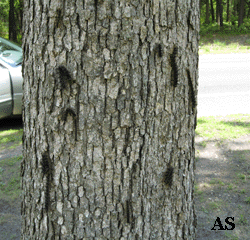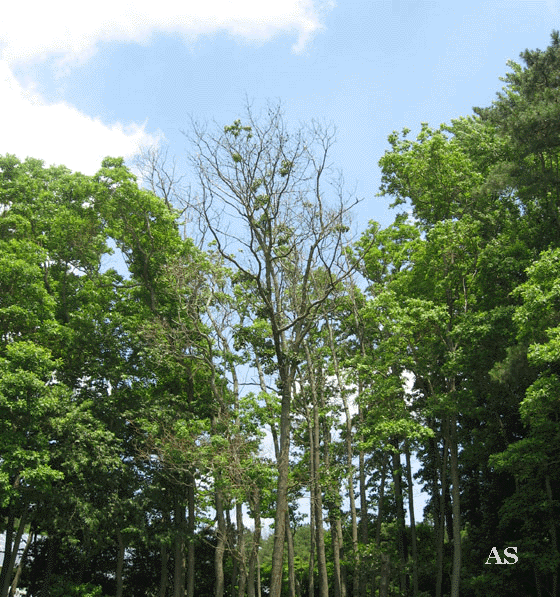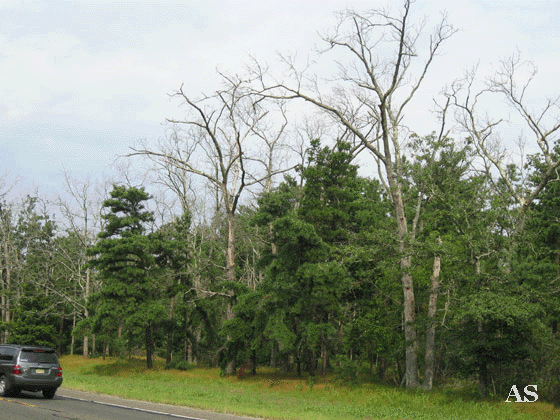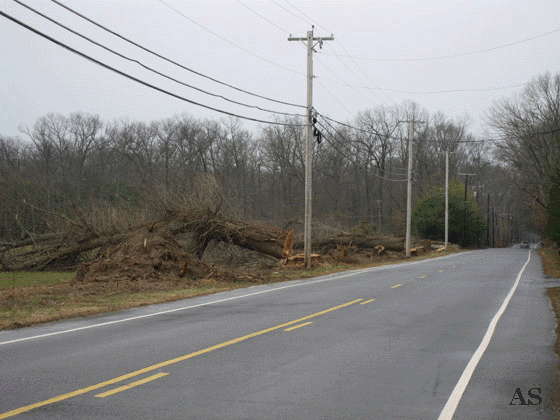
2009 Update - Gypsy Moth Tree Damage in Shamong Township, NJ
More Updates: 2008 Update, 2010 Update, 2011 Update, 2012 Update
What Happened in 2009
The Gypsy Moth problem was less in 2009 than in the two previous years. The New Jersey Department of Agriculture�s annual gypsy moth aerial defoliation survey showed 91,890 acres of trees experienced some level of leaf loss in the state in 2009, as compared with 339,240 acres in 2008.
 >
>
Sick and dead
gypsy moth caterpillars
In Shamong, NJ, the gypsy moth problem was not nearly as bad in 2009 as in 2008 and much less than in 2007. Shamong did not do any aerial spraying in 2009.
We did not find nearly as many gypsy moth caterpillars on our trees. The few we did find seemed sickly, or dead. See photo at the right.
In 2009, as in 2008, we had cool, wet weather in late April and early May. The wet weather may have allowed the caterpillar's natural enemy, the fungus "Entomaphaga Mamaiga" to multiply and thrive. It likely killed many, and maybe even most, of the gypsy moth larvae.
In 2009, the results of trees having been badly defoliated in 2007 became very apparent. Many trees never recovered and are now dead and will have to be removed at considerable expense. Some are already being removed. Examples are shown below.
Photos of Trees Killed by Gypsy Moths

Oak tree killed by gypsy moths. This tree will have to be removed.

Trees killed by gypsy moths along Route 70, near the Route 72 Circle.

Trees killed by gypsy moths being removed along Willow Grove Road in Shamong Township.